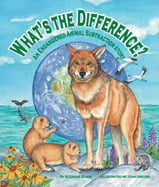Alignment to Standards for TX

| Grade | Number | Standard |
|---|---|---|
| 1 | 111.13 (1.1) | uses whole numbers to describe and compare quantities. |
| 1 | 111.13 (1.3) | recognizes and solves problems in addition and subtraction situations. |
| 1 | 111.13 (1.5) | recognizes patterns in numbers and operations. |
| 1 | 111.13 (1.5) (C) | is expected to compare and order whole numbers using place value. |
| 1 | 111.13 (1.5) (E) | identify patterns in related addition and subtraction sentences (fact families for sums to 18) |
| 1 | 112.12 (b) (5) (A) | classify objects by observable properties of the materials from which they are made such as larger and smaller, heavier and lighter, shape, color, and texture |
| 1 | 112.12 (b) (9) (C) | interdependence among living organisms such as energy transfer through food chains and animals using plants for shelter. |
| 2 | 111.14 (2.3) (A) | is expected to recall and apply basic addition and subtraction facts to 18. |
| 2 | 112.13. (b) (9) (C) | ways living organisms depend on each other and on their environments such as food chains |
| 3 | 111.15 (3.3) (A) | is expected to model addition and subtraction using pictures, words, and numbers. |
| 3 | 112.14. (b) (10) | organisms undergo similar life processes and have structures that help them survive within their environments. |
| 3 | 112.14. (b) (9) | organisms have characteristics that help them survive and can describe patterns, cycles, systems, and relationships within the environments. |
| 3 | 112.14. (b) (9) (B) | identify and describe the flow of energy in a food chain and predict how changes in a food chain affect the ecosystem such as removal of frogs from a pond or bees from a field |
| 4 | 112.15. (b) (10) | organisms undergo similar life processes and have structures that help them survive within their environment. |
| 4 | 112.15. (b) (9)(A) | most producers need sunlight, water, and carbon dioxide to make their own food, while consumers are dependent on other organisms for food |
| 4 | 112.15. (b) (9)(B) | describe the flow of energy through food webs, beginning with the Sun, and predict how changes in the ecosystem affect the food web such as a fire in a forest. |
| 4 | 113.6. (4.9) (C) | analyze the consequences of human modification of the environment in Texas, past and present. |
| 5 | 112.16. (b) (10) | organisms undergo similar life processes and have structures that help them survive within their environments. |
| 5 | 112.16. (b) (9) | there are relationships, systems, and cycles within environments. |
| 5 | 112.16. (b) (9) (B) | describe how the flow of energy derived from the Sun, used by producers to create their own food, is transferred through a food chain and food web to consumers and decomposers |
| 5 | 112.16. (b) (9) (C) | predict the effects of changes in ecosystems caused by living organisms, including humans, such as the overpopulation of grazers or the building of highways |
| 5 | 113.7. (5.9) (C) | analyze the consequences of human modification of the environment in the United States, past and present. |
| K | 111.12 (K.1) | uses numbers to name quantities. |
| K | 111.12 (K.1) (A) | is expected to use one-to-one correspondence and language such as more than, same number as, or two less than to describe relative sizes of sets of concrete objects. |
| K | 111.12 (K.4) | models addition (joining) and subtraction (separating). |
| K | 112.11 (b) (10) (A) | sort plants and animals into groups based on physical characteristics such as color, size, body covering, or leaf shape |
| K | 112.11 (b) (3) (A) | identify and explain a problem such as the impact of littering on the playground and propose a solution in his/her own words |
| PK | PK.1. (B) | counts by ones to 10 or higher |
| PK | PK.1. (C) | counts concrete objects to five or higher |
| PK | PK.1. (D) | begins to compare the numbers of concrete objects using language (e.g., ''same'' or ''equal,'' ''one more,'' ''more than,'' or ''less than'') |
| PK | PK.1. (E) | begins to name ''how many'' are in a group of up to three (or more) objects without counting (e.g., recognizing two or three crayons in a box) |
| PK | PK.1. (J) | compares objects and organisms and identifies similarities and differences |
| PK | PK.1. (K) | sorts objects and organisms into groups and begins to describe how groups were organized |
| PK | PK.2. (B) | describes properties of objects and characteristics of living things |
| PK | PK.2. (I) | identifies similarities and differences among objects and organisms |